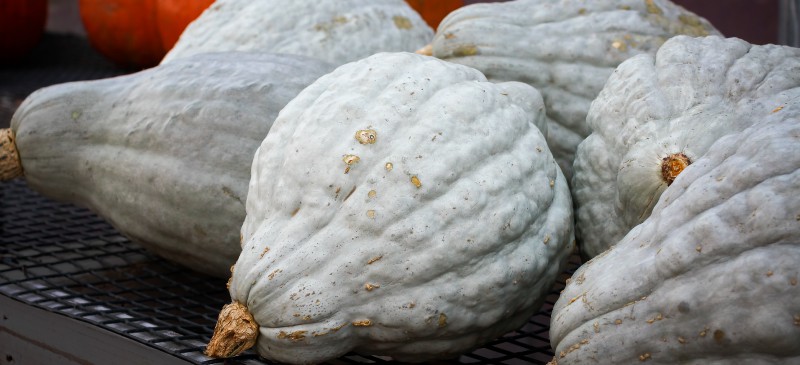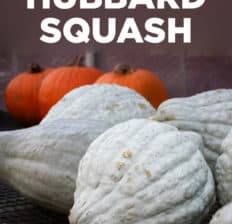This Dr. Axe content is medically reviewed or fact checked to ensure factually accurate information.
With strict editorial sourcing guidelines, we only link to academic research institutions, reputable media sites and, when research is available, medically peer-reviewed studies. Note that the numbers in parentheses (1, 2, etc.) are clickable links to these studies.
The information in our articles is NOT intended to replace a one-on-one relationship with a qualified health care professional and is not intended as medical advice.
This article is based on scientific evidence, written by experts and fact checked by our trained editorial staff. Note that the numbers in parentheses (1, 2, etc.) are clickable links to medically peer-reviewed studies.
Our team includes licensed nutritionists and dietitians, certified health education specialists, as well as certified strength and conditioning specialists, personal trainers and corrective exercise specialists. Our team aims to be not only thorough with its research, but also objective and unbiased.
The information in our articles is NOT intended to replace a one-on-one relationship with a qualified health care professional and is not intended as medical advice.
What Is Hubbard Squash? Nutrition, Benefits, Recipes & More
December 3, 2021

Did you know that within the winter squash family there are more than 15 varieties of edible squashes that are commonly eaten? While most people are familiar with types like butternut, delicata and acorn squash, there’s a lesser-known variety that you should get to know: hubbard squash.
What does hubbard squash taste like? It’s described as having a mild, sweet, nutty and slightly savory taste.
It’s chock-full of nutrients, including vitamin C and beta-carotene/vitamin A, and it makes a great addition addition to soups, casseroles, baked goods, pasta dishes and more.
What Is Hubbard Squash?
Hubbard squash (Cucurbita maxima) is a large squash with a gray/blue skin. It has a golden orange center that becomes soft and sweet when cooked.
Oftentimes the outside rind/skin is lumpy and bumpy.
As a member of the winter squash family, hubbard squash is technically a fruit and not a vegetable, however it’s treated more like a veggie. It’s a warm-season annual crop that grows on vines and trails along the ground or climbs up structures.
It’s typically harvested in the autumn and can remain fresh and edible for many months through the fall and winter even without refrigeration.
Hubbards are thought to be native to Central and South America. Today they are often used ornamentally during the fall for Halloween and Thanksgiving decorating.
Types/Varieties
This species can range in size from six to 40 pounds. Smaller varieties of hubbard squash, such as the Blue Ballet species, tend to have a bit sweeter of a taste, while larger ones are nuttier and more savory.
Aside from Blue Ballet, other varieties include golden or green hubbard.
Are hubbard squash and butternut squash the same?
Hubbards are related to many other types of squash in the Cucurbita maxima family, including:
- buttercup
- marrow
- kabocha
- carnival
- red kuri
- spaghetti
- autumn
- pumpkin
- turban
- sweet dumpling
- acorn
- butternut
While it’s similar to butternut squash in terms of nutrition content and uses, butternut squash is another species of winter squash with different characteristics. You can basically substitute one for the other in most recipes or use them in place of cooked pumpkin or sweet potatoes.
Nutrition
Why is hubbard squash good to eat? Hubbard squash nutrition benefits include its high supply of vitamins A (beta-carotene), B6, C and E, as well as magnesium, potassium and manganese.
It’s also low in both calories and fat, yet provides natural carbohydrates, fiber and some sugars.
One cup (about 205 grams) of baked hubbard squash contains approximately:
- 102 calories
- 22.2 grams carbohydrates
- 5.1 grams protein
- 1.3 grams fat
- 10 grams fiber
- 12,374 international units vitamin A (247 percent DV)
- 10.5 milligrams vitamin C (32 percent DV)
- 734 milligrams potassium (21 percent DV)
- 0.4 milligrams vitamin B6 (18 percent DV)
- 0.3 milligrams manganese (17 percent DV)
- 45.1 milligrams magnesium (11 percent DV)
- 0.2 milligrams thiamine (10 percent DV)
- 0.9 milligrams pantothenic acid (9 percent DV)
- 32.8 micrograms folate (8 percent DV)
- 0.1 milligrams riboflavin (6 percent DV)
- 1.1 milligrams niacin (6 percent DV)
- 1 milligram iron (5 percent DV)
- 47.2 milligrams phosphorus (5 percent DV)
- 0.1 milligrams copper (5 percent DV)
Benefits
1. Great Source of Antioxidant Vitamin A/Beta-Carotene
One of the greatest benefits of hubbard squash nutrition is its supply of carotenoid antioxidants. Studies show that as a high-antioxidant food it can help fight oxidative stress and free radical damage, which contribute to signs and aging and chronic disease development.
Vitamin A may even have some anti-obesity effects and be able to defend against metabolic syndrome.
Beta-carotene is found in high amounts in many types of winter squash, including hubbard, pumpkin, butternut squash, etc. Along with other carotenoids, consumption of beta-carotene is linked to a reduction in inflammation, enhanced vision and skin health, support for cardiovascular health, and prevention of certain types of cancer.
2. Supports Strong Immune System With Vitamin C
Antioxidants within winter squashes, such as vitamin A and vitamin C, promote healthy immune responses and can help you fight illnesses, infections and diseases related to oxidative stress.
Vitamin C within hubbards has many benefits, including lowering the risk for some types of cancers, such as ovarian, lung and skin cancer (melanoma), as well as helping prevent the common cold and other respiratory infections.
Additionally, vitamin C supports synthesis of collagen protein within the body. This helps form connective tissues that make up the skin, joints, ligaments, tendons and gut lining.
3. Good Source of Heart-Healthy Potassium
Hubbards are a rich source of the electrolyte mineral known as potassium, which plays an important role in regulating blood pressure levels and helping prevent hypertension. Additionally, it’s required for the function of several organs, including the heart, kidneys, brain and muscular tissues.
Diets higher in potassium can potentially reduce the risk for stroke, abnormal heart rates, poor circulation and muscle cramping.
People eating a “standard Western diet” often lack potassium-rich foods in their diets, and they consume too much sodium, which counteracts some of the effects of potassium. This is why it’s important to eat electrolyte-rich fruits and veggies often, including squash.
4. Helps Promote Bone/Skeletal Health
Certain nutrients within hubbards, such as potassium and manganese, assist in maintaining strong bones and helping prevent loss of bone density, which puts adults at a higher risk of developing osteoporosis.
Another potential benefit of foods that contain both manganese and potassium is their ability to help reduce obesity due to how these nutrients support general metabolic health.
How to Cook
Look for this squash at local farmers markets or even the decorative/ “ornamental” section at pumpkin patches and nurseries.
When shopping for squash, select those that are blemish- and bruise-free. You want the stem to be smooth and intact and the squash to feel heavy.
Look for those with stems that are tan, dry and corky. Ripe squash should have a matte-looking skin but not be too glossy.
As mentioned above, hubbard squash has a naturally sweet and nutty taste. Some varieties have a buttery, nutty flavor and a flaky, dry texture, similar to a baked potato.
The cooked flesh makes a great addition to a variety of recipes, especially when baked and mashed. It’s a mild squash overall and shouldn’t overpower recipes.
How do you cut hubbard squash?
Because it’s so large and hard to handle, you’ll often find this squash sold as pre-cut wedges, which saves you some effort in cutting it.
Hubbards have a very thick and tough skin, so most cooks recommend that you cut it open initially by dropping it on the ground so the outside cracks open. Preferably do this outdoors so you don’t make a mess in your home.
Once cracked open, remove the seeds, which can be saved and roasted just like pumpkin seeds.
Cooking hubbards:
To cook hubbard squash, try baking, roasting or steaming and pureeing it (just like you would with pumpkin, butternut squash or sweet potatoes). When made into a smooth purée, it can be used to moisten and sweeten breads, pies, muffins, pancakes, or even casseroles and pasta dishes.
Winter squashes generally pair well with flavors including cinnamon, nutmeg, curry, sage, black pepper, chipotle and chili.
Some nutrients found in squash, including carotenoids, are fat-soluble antioxidants that are best absorbed into the body when accompanied by fat sources, such as avocado or olive oil. This is why it’s a good idea to pair hubbard with a healthy source of fat.
One of the easiest methods is roasting the squash at 350 degrees Fahrenheit for about 45 minutes. Cook it until it’s soft and lightly browned around the edges. Try adding some salt and spices mentioned above to make the flavor pop.
After you steam or roast it, you can create a squash purée using a high-speed blender or food processor.
Use the cooked squash within several days, and keep it refrigerated. When uncooked, whole hubbard squashes will last up to six months if stored in a cool, dry place.
Recipes:
Try subbing hubbard for butternut squash in these butternut squash recipes or acorn squash recipes. Other ideas include:
- Healthy Roasted Squash Recipe
- Chipotle Chicken Blue Hubbard Squash Soup
- Squash Bake Recipe
- Blue Hubbard Pie
- Apple Stuffed Baby Blue Hubbard Squash
Risks and Side Effects
Winter squash varieties are generally considered very hypoallergenic. However, there are some people who have an allergy to these crops, so stop eating them and contact your doctor immediately if you develop rashes, hives or notice difficulties in breathing.
If you find your skin and hands becomes itchy, red or swollen when handling this squash, try using gloves when preparing it.
Conclusion
- Hubbard squash is a member of the winter squash family. It’s technically a fruit and has a mild and sweet flavor.
- It can be roasted, baked, pureed and added to pasta, used in soups and more, just like butternut squash or pumpkin .
- Hubbard squash nutrition benefits include supplying you with high amounts of vitamins A and C, plus potassium, manganese, magnesium, fiber and B vitamins.
- It’s supportive of heart health and normal blood pressure, immune system function and prevention of infections, normal vision, and bone health.


